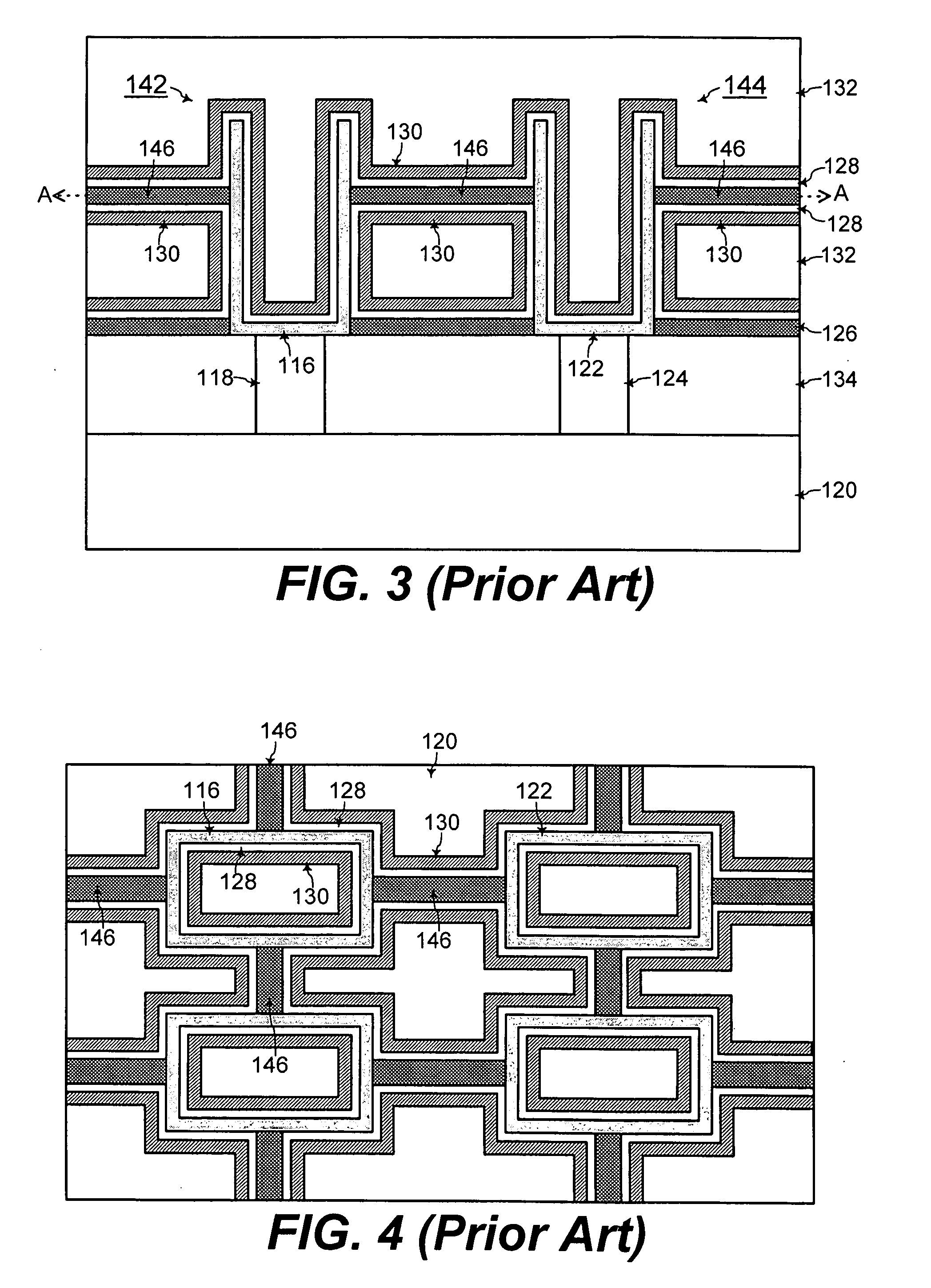Fabrication of lean-free stacked capacitors
a technology of stacked capacitors and stacked plates, which is applied in the direction of conveying, food shaping, transportation and packaging, etc., can solve the problems of 146/b>, the width and thickness of the support beams are more difficult to control in the prior art, and the malfunction of the dram is more difficult to achiev
- Summary
- Abstract
- Description
- Claims
- Application Information
AI Technical Summary
Benefits of technology
Problems solved by technology
Method used
Image
Examples
Embodiment Construction
[0043] Referring to FIG. 8, a DRAM (dynamic random access memory) is fabricated onto a semiconductor substrate 202, comprised of a silicon wafer for example. FIGS. 9A, 10A, 11A, 12A, 13A, 14A, 15A, 16A, 18A, 19A, 20A, 21A, and 23A show cross-sectional views along a B-B direction of FIG. 8 for fabrication of stacked capacitors, according to an embodiment of the present invention. FIGS. 9B, 10B, 11B, 12B, 13B, 14B, 15B, 16B, 18B, 19B, 20B, 21B, and 23B show cross-sectional views along a C-C direction of FIG. 8 for fabrication of stacked capacitors, according to an embodiment of the present invention.
[0044] In an example embodiment of the present invention, the stacked capacitors are part of the DRAM fabricated on the semiconductor substrate 202. The B-B direction of FIG. 8 crosses through a plurality of word-lines of such a DRAM, and the C-C direction of FIG. 8 crosses through a plurality of bit-lines of such a DRAM.
[0045] Referring to FIGS. 9A and 9B, a plurality of STI (shallow tr...
PUM
 Login to View More
Login to View More Abstract
Description
Claims
Application Information
 Login to View More
Login to View More - R&D
- Intellectual Property
- Life Sciences
- Materials
- Tech Scout
- Unparalleled Data Quality
- Higher Quality Content
- 60% Fewer Hallucinations
Browse by: Latest US Patents, China's latest patents, Technical Efficacy Thesaurus, Application Domain, Technology Topic, Popular Technical Reports.
© 2025 PatSnap. All rights reserved.Legal|Privacy policy|Modern Slavery Act Transparency Statement|Sitemap|About US| Contact US: help@patsnap.com



